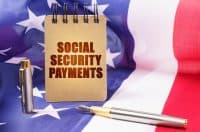
After U.S. markets closed on Tuesday, consumer lending platform Upstart Holdings Inc. (NASDAQ: UPST) reported third-quarter earnings results. Nothing worked out as analysts had forecast, and Upstart stock took a beating in Wednesday’s premarket session.
Upstart provides a cloud-based AI lending platform for consumers that is connected to a network of partner banks and credit unions. The platform allows potential borrowers to apply for a loan and get a decision within minutes. And that’s where the company’s issues begin.
Were the results that bad?

Analysts expected Upstart to post an adjusted loss of $0.02 per share. The company reported a loss of $0.05, far better than the per-share loss of $0.24 in the year-ago quarter. Upstart posted a profit of $0.06 in the second quarter, making the larger-than-expected loss doubly disappointing.
Fee revenue fell 18% sequentially, from $179.3 million to $146.8 million. For the first nine months of this year, fee revenue has fallen by more than 45%, from $751.7 million in 2022 to $407.8 million.
Loan volume dropped 34% year over year as the company’s lending partners originated 114,464 loans. The conversion rate from potential customers asking for more information fell from 9.7% to 9.5% year over year.
Operating cash flow dropped sequentially from $162 million to $39 million.
Net interest income came in negative, posting a loss of $12.2 million, significantly better than the prior quarter’s loss of $22.2 million.
There’s not much to get excited about in these numbers.
What about the outlook?

Upstart expects a net loss of $48 million and an adjusted net loss of $14 million. The adjusted EBITDA outlook calls for a break-even quarter, compared to a positive $2.3 million in the third quarter.
The company forecast net interest income to be a loss of $15 million in the fourth quarter.
Not much to shout about here. (These 20 companies have the worst reputations.)
Four reasons the stock is tanking

1. Short squeezes don’t last forever
The runup in Upstart’s share price began in early May when short interest in the stock was 35%. In February, short interest topped 45%. Upstart had just received $2 billion in new funding from existing partners, sending bears running to cover their short bets. Two weeks after reaching their August peak, the shares had dropped more than 50% of their gain.
2. Tumbling conversion rate for loans
In the third quarter, Upstart converted just 8.5% of all submitted loan applications to funded loans. On the company’s conference call, CFO Sanjay Datta said that the company’s peak conversion rate was around 24%.
3. High interest rates
The macro environment for the past year has not been favorable for lenders. Consumers have been cautious about borrowing at interest rates that are at decades-high levels. That constrains demand for loans. Upstart is counting on rising demand as interest rates flatten and, perhaps, come down. But, Datta said on the conference call, the company has no “explicit guidance or predictions on how that will evolve over the coming quarters.”
4. High loan risk
High interest rates mean that lenders want to be sure that they are going to get their money back, with interest. That tightens the requirements for lending and limits Upstart’s ability to approve more loans. The company’s Upstart Macro Index, which has recently been upgraded to include a seasonality adjustment, “indicates a stable level of loan defaults throughout most of this past year, albeit one which remains remarkably high,” according to Datta.
Upstart is doing what it can to right the ship, but it can do little to affect high interest rates and increased risk. The company recently kicked out a self-funded home equity line of credit (HELOC) product, and admits that it will be some time before the impact of the new program will be known.
Upstart stock traded down about 28% in Wednesday’s premarket session, at $21.20 in a 52-week range of $11.93 to $72.58.
In 20 Years, I Haven’t Seen A Cash Back Card This Good
After two decades of reviewing financial products I haven’t seen anything like this. Credit card companies are at war, handing out free rewards and benefits to win the best customers.
A good cash back card can be worth thousands of dollars a year in free money, not to mention other perks like travel, insurance, and access to fancy lounges.
Our top pick today pays up to 5% cash back, a $200 bonus on top, and $0 annual fee. Click here to apply before they stop offering rewards this generous.
Flywheel Publishing has partnered with CardRatings for our coverage of credit card products. Flywheel Publishing and CardRatings may receive a commission from card issuers.
Thank you for reading! Have some feedback for us?
Contact the 24/7 Wall St. editorial team.





